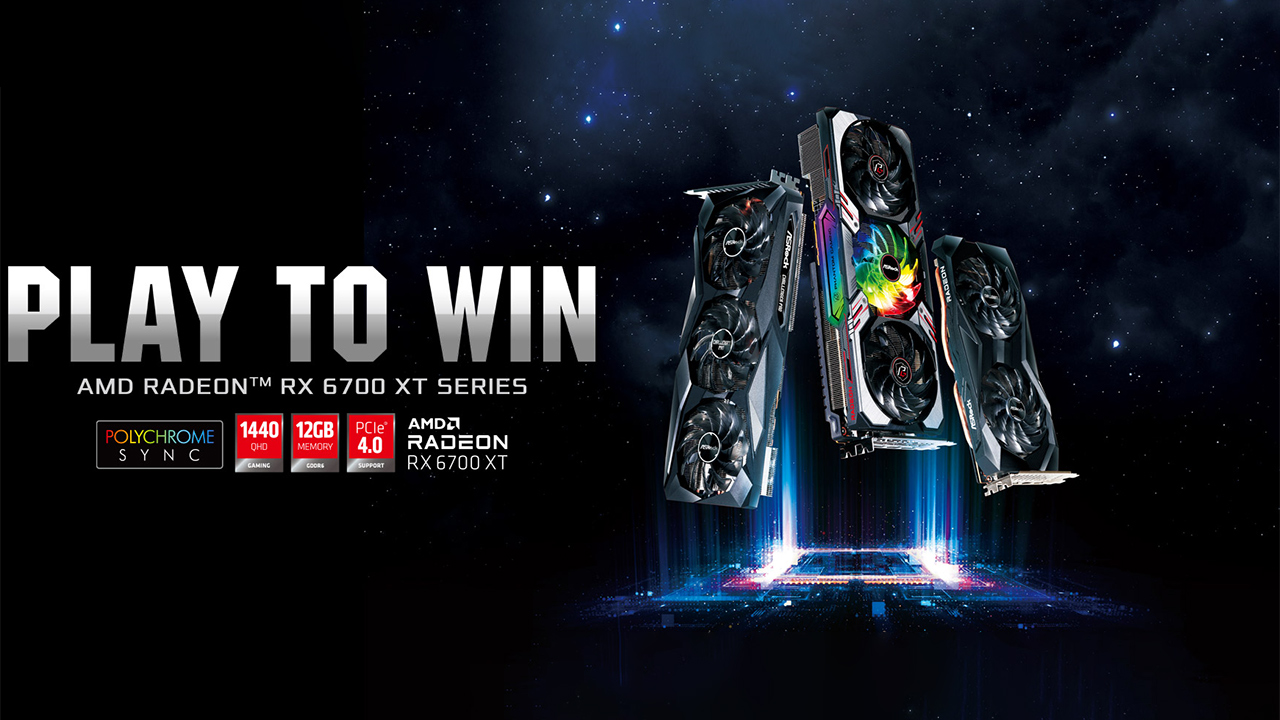ASRock has revealed its lineup of custom-designed Radeon RX 6700 XT graphics cards. The family includes three boards that offer different levels of performance and features, and therefore will sell at three different price points. All of the cards feature enhanced voltage regulating modules (VRMs), require two eight-pin power connectors, and come with sophisticated cooling systems. So expect them to be faster than AMD’s reference designs.
ASRock’s lineup features the Radeon RX 6700 XT Phantom Gaming D 12GB OC (RX6700XT PGD 12GO), the Radeon RX 6700 XT Challenger Pro 12GB OC(RX6700XT CLP 12GO), and the Radeon RX 6700 XT Challenger D 12GB (RX6700XT CLD 12G). All of these cards are aimed at enthusiasts, but for some reason ASRock does not disclose their exact frequencies. So it’s impossible to make guesses about how exactly these boards stack up against each other and against AMD’s reference Radeon RX 6700 XT. That said, ASRock is not the only company to keep the specifications of its Radeon RX 6700 XT cards a secret.
ASRock’s Phantom Gaming is the company’s premium gaming brand, so it’s not surprising that the Radeon RX 6700 XT Phantom Gaming D 12GB OC is the company’s top-of-the-range Navi 22-powered product. The graphics card relies on an ASRock-designed black printed circuit board (PCB) featuring DrMOS power stage devices, 60A inductors, and solid-state capacitors to ensure very clean power is delivered to the GPU.
The card is equipped with a sophisticated cooling solution comprising two massive aluminum heatsinks, four heat pipes, three striped axial fans, a reinforced metal frame, and a metal backplate. Traditionally for higher-end products, the card is outfitted with addressable RGB LEDs (which can be disabled with a switch). The cooler seems to be at least 2.5 slots wide, so the Radeon RX 6700 XT Phantom Gaming will need to be installed into fairly roomy cases.
ASRock’s Radeon RX 6700 XT Challenger Pro 12GB and the Radeon RX 6700 XT Challenger D 12GB sit below the Phantom Gaming, yet they feature the same AG2005 revision 1.00 PCB as their higher-end counterpart. So from power delivery, components, and build quality standpoints, all three products are exactly the same (or at least very similar).
As the name suggests, the Challenger Pro is positioned above the Challenger D, which is why it is equipped with a larger triple-fan cooling system with three heat-pipes. By contrast, the Challenger D is slightly more compact and has two fans. Meanwhile, both boards are two slots wide, so they will fit into smaller cases.
ASRock has not revealed any MSRPs for its custom Radeon RX 6700 XT graphics cards, which is not particularly surprising given shortages of GPUs and components. Whatever the launch price, expect them to sell out faster than you can fat-finger them into a shopping cart.
